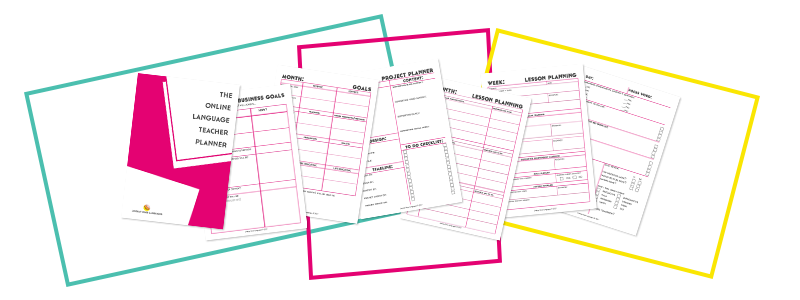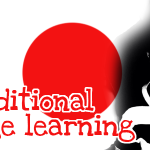December 19th, 2017
How Organizing Makes You a Better Online Language Teacher
Your teaching records are a mess, your desk is covered in mugs with coffee stains older than your first child, your lesson plans haven’t been updated since Geri was in the Spice Girls, and your teaching is a reflection of all this. Time to get organised and become a better online language teacher.

It feels like such a tiny meaningless thing, yet it feels like such an overwhelming task that you don’t want to face it: tidying up.
And it’s ‘en vogue’ right now, with every other blog going on about ‘the Capsule Wardrobe’ or the ‘KonMari Method’ so you’re shying away from it in order to snub trends and do it your own way. Humph.
Well, I hate to be the bearer of bad news but it’s time to tidy up. But for us online teachers, this doesn’t mean clearing out the wardrobe or getting rid of half of those kitchen appliances (popcorn maker, anyone?).
Nope. Instead, it’s more of a digital tidy up, a clearing and refresh of how we continually organise our online language teaching, which has a positive effect on our teaching and how we do everything behind the scenes. Woop!
Why?
Well, beyond the trends, there is plenty of science to prove that when we’re ‘tidy’ and organised, we do better work.
For example, when it comes to the tidiness of our surroundings, this study found that clutter makes us more stressed and there’s been plenty of research (such as this study) into the effects of multiple stimuli on us, and the effects of cleanliness and organisation in general.
This means there’s no denying we’ll better serve our students when we’re running like clockwork behind the scenes. Ready to get there? Let’s do this thing.
How?
Think big and then narrow things down
It’s important to look at the bigger picture before solving the problem right in front of you. By which I mean, consider the long-term goals or the long-term lesson planning before then working out the shorter-term goals or lesson planning that will be leading towards those long-term aims.
By doing things this way round, you’re consistently planning productively rather than just throwing ideas at the wall and hoping they stick. Instead, everything you do is useful and has a purpose. Yay!
In Practice…
Start with annual goals (or maybe even a 5 year plan), then break that down into monthly goals and as you approach each new month break things down again to weekly goals, and then each week, set daily goals.
The same goes for your lesson planning. I don’t take this as far as annually normally, as one of the benefits of teaching privately is the flexibility in not having to stick to a rigid plan, but termly is usually far enough in advance.
Then each week I’ll plan the following week’s lesson in more detail, so I’m always working at least one week in advance.
Business, business, business
Remember that your teaching is now a business, so treat it that way and remember to plan business goals and put together a business plan that you update regularly.
The benefit of this is that much like the previous tip, you’re giving yourself something to work towards rather than just floating along and seeing what happens next.
No one owes you anything. You need to go and get it for yourself.
Of course, from time to time, you’ll get lucky, and opportunities will come your way that you weren’t perhaps expecting but that can’t be relied on, so, you know, don’t rely on it.
In Practice…
If you’re new to the whole business side of things (sidenote – I totally was too. I taught myself everything as I did it), then consider asking for help.
It could be in the form of a business coach or advisor, it could be in the form of a networking or mastermind group, but whatever it is, don’t feel ashamed to ask questions.
There seems to be an underlying expectation that you’re supposed to have all the answers and know everything about running a business when you go to something like a networking group, but trust me, everyone else there has as many questions as you, even if they don’t show it.
Content
A really common question with new students on the Online Teaching Starter Kit is how the heck they’re going to be able to produce good quality content regularly.
I get it. It seems like there’s some obvious topics and then…blank.
So how can you get around this? By organising your content planning, of course!
In Practice…
Firstly, you need to think about what type of content you want to focus your attention on. If you’re unsure, decide by your strengths and your access to necessary equipment.
For example, if you love writing, then blogging makes most sense. But if you’re actually pretty comfortable on video (and have a half decent camera) then focus on creating useful video content.
Next you need to mindmap some ideas. At this stage, it doesn’t matter about the order or how good these ideas are, that will come a little later.
When you’ve got those base ideas, consider any seasonal things you’d want content for. That could be known events such as Christmas or events more closely related to your teaching such as a back to school promotion. Now fit in content based around those ideas before adding in other ideas that you mindmapped before.
Finally, make sure that as well as simply setting a date when you want to publish content, you also need to set aside some time to actually make the stuff!
The more regular this becomes, the easier it’ll become to create content on a regular basis. High five for organisation.
Lessons
Of course, now we’re at the teaching. Much like we’ve said previously about setting time for content creation to promote your lessons to potential new students, you need to set some regular time for planning your lessons and creating any new resources you need for lessons.
After all, this is what it’s all about.
In Practice…
I find it useful to do termly planning every 6 weeks as well as a weekly time set aside for lesson planning for the following week.
One way I feel consistently organised with the behind the scenes of my online teaching is when my lessons are planning a week in advance. Ahh!
Review
So we’re plodding onwards and that’s great, except…it’s not all that great if we’re never taking any time to step back and check in on how things have been going.
Are there any ways we can improve? Any things we can do differently to ensure we’re doing a better job this time round compared to last time?
The only way to find out is by reviewing regularly.
In Practice…
Every month I take a few minutes to check in on how things have gone that month in terms of business, content, and lessons and think forward to the coming month.
Not only does this give me a chance to reflect on what worked well and what didn’t, but it also gives me a chance to set better goals for the coming month.
I do this with my language learning here on the blog with Clear The List and with the work side of things myself using the review page from the Online Language Teacher Planner.
Regular Tasks
As well as the bigger picture, it’s worth considering your tasks that when done regularly help to keep things moving along nicely the whole time.
They may be daily, weekly or monthly. Here’s an example of my own regular tasks scheduled in my Asana:
Daily:
- Check social media groups and respond to questions
- Check course communities and respond to questions
- Respond to emails for 20 minutes
- Update student lesson record of the day
Weekly:
- Reply to blog comments
- Respond to YouTube comments and other social platforms if not checked daily
- Ensure student lesson record is fully up to date
Monthly:
- Tidy Google Drive
- Clear SD cards, desktop and harddrives
- SEO and website maintenance: fix broken links, update old blog posts, fix 404 pages etc
- Finance check in – invoices paid and sent, expenses and spending calculated, sent to accountant
The Online Language Teacher Planner
If you’re ready to get your teaching organised, you’ll love using The Online Language Teacher Planner to get you there.
To learn more and get your copy right away, click the button below.








